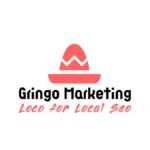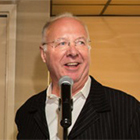There will be a Dreamforce after all in 2020, but it will be virtual of course. But it will not be squeezed into a few days, and tickets will not cost upwards of $1,500. This year’s Dreamforce, re-branded as Dreamforce To You, is an extended program of thought leadership, community participation and entertainment, and it’s free to all.
The program. The event will kick off with CEO Marc Benioff’s keynote on November 12, and will run through an unspecified date in December.
We spoke exclusively to Salesforce CMO Stephanie Buscemi about the thinking behind the re-shaping of Dreamforce — and what to expect.
Should we do Dreamforce at all? “Near the beginning of the pandemic,” said Buscemi, “so many of our customers turned inward to stabilize their business and their employees, so they weren’t asking us about Dreamforce; and we weren’t communicating about it, because it would have felt a little tone-deaf. In the early stages of the pandemic, it was very much crisis communications.”
As the months passed, Buscemi observed Salesforce customers transforming their careers and their businesses. “Those Trailblazers helped inform what we’re announcing here,” she said. “We started a dialogue with them and the community at large about whether we would do Dreamforce at all and could it be done virtually?”
The challenge was significant. “We joke, but it’s true: it’s part tech conference, part rock concert, part a coming together of world leaders, and part a wellness retreat. There’s so much packed in there that we started to uncouple it and ask what does the community need right now, and what can be pushed to the side?”
Relevance is critical. The unequivocal message from stakeholders, Buscemi told us, was that relevance — conversations about the things we’re dealing with right now — was critical. “People’s appetite for a product pitch isn’t there.”
People are interested in how to manage for the crisis, how to support customer success — “And speed,” she said. “There are customers who had three-year road maps for digital acceleration, and they have done more in the last three months than they had planned the three-year road maps. We’re all surprising ourselves at what we’re capable of getting done — when forced.”
The longer program. In its in-person incarnation, Dreamforce was squeezed essentially into a handful of long days, with countless after-parties echoing through the San Francisco night. “It’s a lot to ask people to sit for that long and engage,” she said. “While we heard really clearly from our customers that they wanted us to bring them together, that they loved the connectiveness of the community, we all agreed that because Dreamforce had been a four-day event in San Francisco, to make it a four-day virtual event wasn’t going to work.”
The decision was taken to extend the time period, and acknowledge that people are willing to engage for much shorter periods in a virtual format. “Our live keynote every year was 90 minutes, and often more than that,” said Buscemi. The “sweet spot” for a virtual keynote, she said, was about 18 minutes. “Then you start to lose people because you’re competing with all the things around them.”
The intention is to determine the right length for a presentation, the right length for a panel discussion, and the right number of people for a discussion in a virtual forum. “Birds of a feather” discussions will take place among much smaller groups: “If you try to do that with 20 people online, people don’t get seen.”
This year’s content. We asked Buscemi what attendees should expect. “Our keynote will feature our CEO Marc Benioff, and he’ll talk about our path forward together in this new normal. If we have to find a silver lining in the pandemic, it has been a massive accelerator for digital transformation, and we’ll be showcasing what leading companies have been doing over the last six months, not just to survive in the pandemic, but frankly thrive.”
The rest of the program has yet to be officially announced.
Giving back. The unavoidable loss of an in-person Dreamforce this year will have an immense negative impact on the San Francisco hospitality industry. In a normal year, restaurants, bars and hotels operate at maximum capacity throughout Dreamforce week. It’s heartening then to see Salesforce donating $2 million to San Francisco small businesses.
“This is our headquarters,” said Buscemi. “The city of San Francisco has been so fantastic to Salesforce for fifteen years plus of delivering Dreamforce. We want to be there to help small businesses through this time.” Salesforce will donate an additional $3 million to organizations addressing hunger, health equity,racial inequality, and climate change.
In 2019, Dreamforce was attended by some 170,000 people, many of them paying high rates for tickets. Was the decision to make this a free event difficult? “The world is in crisis. I remember Maya Angelou’s saying, ‘At the end of the day, people remember how you made them feel.’ We want our customers on the other side of whenever this vaccine is, when we’re all fully back in our offices, to remember how we made them feel.”
Why we care. The sheer scale of Dreamforce, which effectively takes over a major U.S. city each year — in normal times — makes it more than just a Salesforce event. Indeed, martech vendors who are not Salesforce partners squeeze their own events into the city around the same time to grab the attention of the six-figure audience. The way Dreamforce has been restructured, and how it now performs, will be examined closely by anyone interested in virtual events.
Note: An earlier version of this story gave more details of the program following the keynote. We now understand that schedule is not officially announced today.
This story first appeared on MarTech Today.



